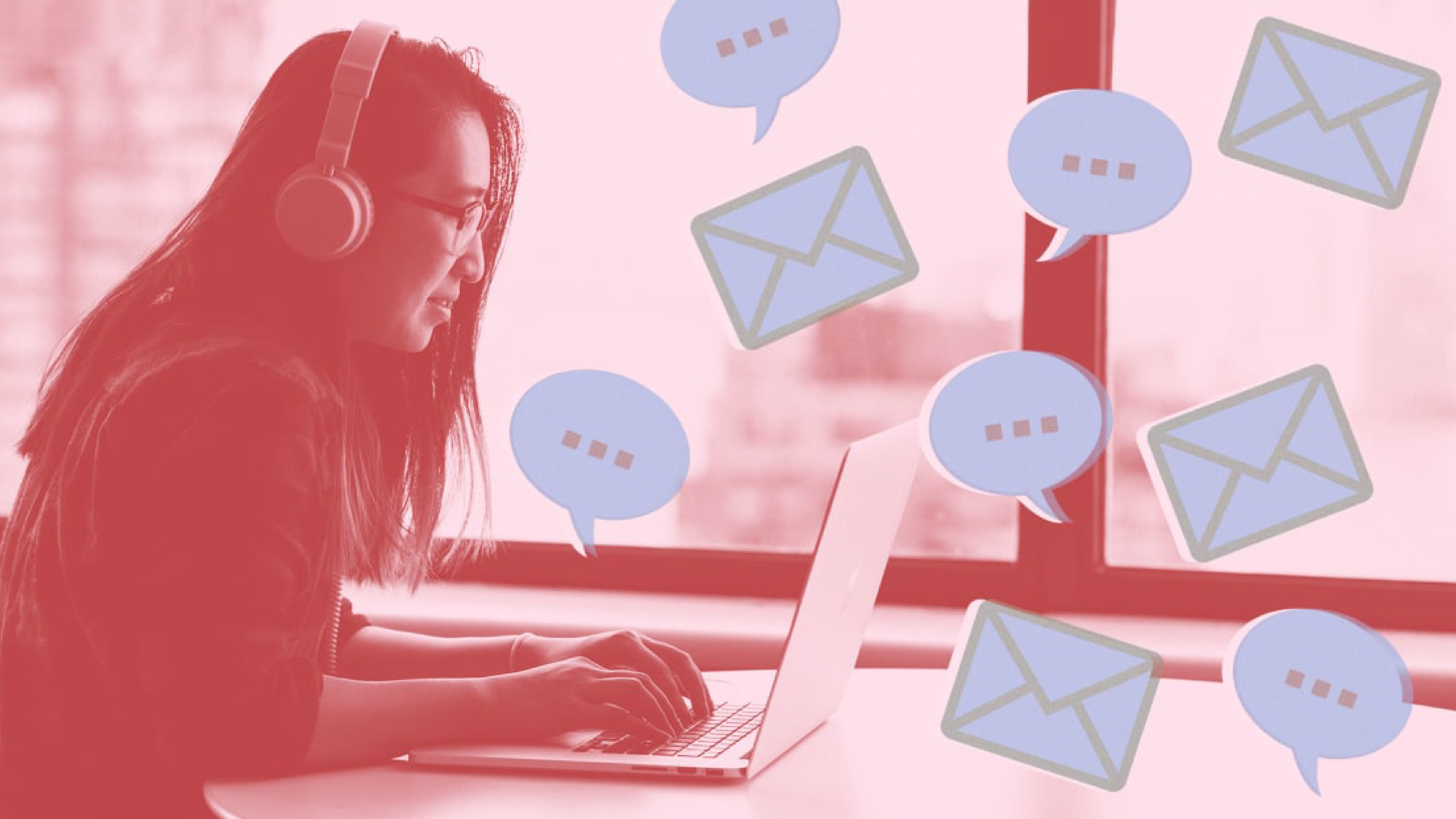
By Myka Meier
Photo Credit: Christina@wocintechchat.com/Unsplash; Chillibibi/Pixabay; Deans_Icons/Pixabay
The etiquette expert who recently partnered with the likes of Facebook Messenger explains how best to communicate virtually as we all make this transition during the coronavirus crisis.
The world is changing at a head-spinning pace right now, and among those shifts is a huge increase in the number of professionals using digital communications tools to collaborate and get business done from home.
Messenger from Facebook, with whom I’ve partnered recently on digital communication etiquette, reports a 70% week-over-week increase in the number of people participating in group video calls on its platform around the world. The amount of time spent in those group video calls has doubled globally, meaning people are conducting not only more video calls but longer ones. The sharpest increase in group video communication has been here in the U.S., where Messenger tallied a 70% uptick in video calls this past week versus the week prior.
There are many benefits to tech-assisted remote work, but the rapid transition to this mode can also be disorienting. As the new reality—that chat and video-chat are for business, too—takes a moment to sink in, lapses in etiquette are bound to happen. It’s a mistake to think that people won’t care or notice. According to a 2019 study from Messenger, 75% of respondents said they expected some degree of digital etiquette when using messaging platforms.
The survey defined etiquette as “a customary code of polite behavior.” With Messenger’s research in mind, here are six guidelines for navigating these unspoken codes in the “WFH” context.
KNOW YOUR AUDIENCE
Chat rooms are often casual and sometimes even semi-anonymous places, so it’s natural to want to relax when you’re in one. Resist the temptation. Too many quips and casual asides will send a conversation off track and into subject areas that are either time-wasting or inappropriate for the workplace. Be aware of who is in your group chat before sending a message. And remember that anyone who is added to the chat later will be able to read what you’ve written.
DON’T LEAVE COLLEAGUES HANGING
It’s typical for coworkers—and all humans—to want to know if their messages have been received. According to the aforementioned Messenger study, 60% of Americans check to see if their latest chat has been read as they wait for a response. If you’re wrapped up in other work, send a quick reply acknowledging that you’ve seen the message and will fully respond later. If you find constant notifications to be distracting, let your team know you’ll be head down on another assignment, or consider “muting” the chat.
MINIMIZE YOUR MULTI-MESSAGING
If your message is met with radio silence, sending a barrage of follow-ups isn’t likely to advance your cause. No one likes to return to a heap of new messages. Moreover, many people believe that they shouldn’t have to: 37% of global survey respondents considered it bad form to over-reply. Multi-messaging can also be counterproductive, as it makes it more time-consuming and potentially overwhelming for a colleague or colleagues to pick up the thread again. A better approach? Save the bulk of your thoughts for when they are ready to respond in real time.
KEEP MOST COMMUNICATIONS CONCISE
Extreme brevity is usually not a good thing—it’s cold and confusing. In general, though, keeping your communications short is a great way of maintaining efficiency and professionalism, especially when a chat or email thread involves a large group of coworkers. If you truly do have a lot to say, change the context. Suggest a one on one or voice or video call on Messenger, both of which allow you to include up to eight people.
SIGN ON AND OFF WITH RESPECT FOR THE CURRENT CLIMATE
Depending on your relationship with the person you are addressing, an informal opening and closing may be perfectly appropriate. To keep correspondence more formal, try “Good morning/afternoon/evening” as a safe intro and end your note with “Best regards, Kind regards, or With regards.” In the current climate, “Stay well” is also an acceptable option.
PROOFREAD MESSAGES
Like it or not, how you communicate shapes how people think of you—and by extension, whatever it is you’re trying to accomplish. Consider that 38% of Americans surveyed agreed that poorly written replies leave a bad impression, and you start to understand why it’s worth spending a couple of extra seconds proofreading a message before clicking Send. Are you expressing yourself clearly? Have you taken a moment to check your grammar, spelling, and punctuation? If so, you’re demonstrating respect for the time and intelligence of the person you are speaking with, which is what etiquette—whether it’s online or IRL—is all about.
For the original article, visit Fast Company.


